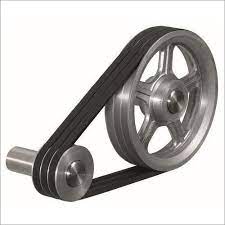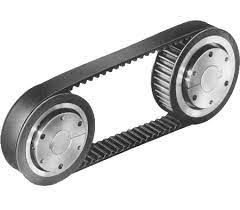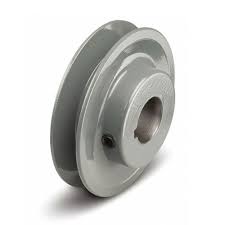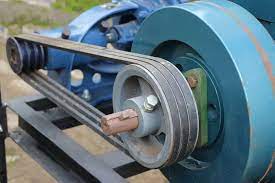Product Description
Product Description
Product Parameters
| Type | Belt width(mm) | Standard Diameter(mm) | Length(mm) |
| Drive Pulley | 500 | 500 |
Length of the pulley depends on the belt width of the conveyor |
| 650 | 500~630 | ||
| 800 | 630~1000 | ||
| 1000 | 800~1150 | ||
| 1200 | 800~1150 | ||
| 1400 | 1000~1350 | ||
| 1600 | 1150~1600 | ||
| 1800 | 1150~1800 | ||
| 2000 | 1350~2000 | ||
| 2200 | 1600~2200 | ||
| 2400 | 1800~2400 | ||
| Bend Pully | 500 | 250~500 | |
| 650 | 250~630 | ||
| 800 | 250~1000 | ||
| 1000 | 250~1600 | ||
| 1200 | 250~1600 | ||
| 1400 | 315~1600 | ||
| 1600 | 400~1600 | ||
| 1800 | 400~1600 | ||
| 2000 | 500~1600 | ||
| 2200 | 630~1600 | ||
| 2400 | 800~1600 |
Detailed Photos
Packaging & Shipping
A conveyor pulley is a mechanical device similar to a conveyor roller that is used to change the direction of the belt in a conveyor system or to drive the belt or to put tension on the belt.
A conveyor pulley is more heavy-duty than a roller and is used at either end of a conveyor, or near the drive/motor. Choosing the right conveyor belt pulley can get tricky, which is where Heinrich CHINAMFG Inc. can offer expert assistance.
Choose One of the Many Types of Conveyor Belt Pulleys:
Drive Pulley / Head Pulley
- A Drive Pulley or Head Pulley is used for the purpose of driving a conveyor belt. They are normally mounted in external type bearings and driven by a motor and reducer. Conveyor head pulleys can be flat faced or crowned and many have lagging to reduce belt slippage. Conveyor drum pulleys, CHINAMFG pulleys and spiral pulleys are the most common style of drive pulleys.
Return Pulley / Tail Pulley
- Return/Tail pulleys are used to redirect a conveyor belt back toward the drive pulley. Conveyor tail pulleys can have internal bearings or can be mounted in external bearings and are usually located at the end of the conveyor bed. Conveyor tail pulleys commonly serve the purpose of a Take-Up pulley to keep tension on the belt.
Idler Pulley
- Any free spinning pulley used in a non-drive position used to support the belt.
Snub Pulley
- A conveyor pulley used to increase belt wrap tension around a drive pulley, typically for the purpose of improving belt traction.
Take-Up Pulley
- A conveyor pulley that can be adjusted in a bracket to increase or decrease belt slack or belt tension.
Bend Pulley
- A conveyor pulley used to redirect the belt and provide belt tension where bends occur in the conveyor system.
/* January 22, 2571 19:08:37 */!function(){function s(e,r){var a,o={};try{e&&e.split(“,”).forEach(function(e,t){e&&(a=e.match(/(.*?):(.*)$/))&&1
| Material: | Carbon Steel |
|---|---|
| Surface Treatment: | Polishing |
| Motor Type: | No |
| Installation: | Multi-Layer |
| Pulley Type: | Head Pulley, Tail Pulley, Snub Pulley, Take up Pul |
| Diameter: | 102mm-1800mm |
| Customization: |
Available
| Customized Request |
|---|

How do you select the right drive belt pulley for a specific vehicle or machinery?
Selecting the right drive belt pulley for a specific vehicle or machinery involves considering several factors to ensure optimal performance and compatibility. Here’s a detailed explanation of the selection process:
1. Determine the Belt Type:
Identify the type of belt required for the application. Common belt types include V-belts, timing belts, flat belts, and ribbed belts. Each belt type has specific design features and requirements that dictate the corresponding pulley design.
2. Determine Power Requirements:
Calculate or determine the power requirements of the system. Consider factors such as the torque and speed requirements, as well as the desired power transmission efficiency. This information will help determine the appropriate pulley size and design to handle the required power load.
3. Consider Speed Ratio:
If the application requires a specific speed ratio between the driving and driven components, such as in timing systems or variable speed applications, calculate the desired speed ratio. This will guide the selection of pulley sizes and the number of teeth or grooves required for proper speed synchronization.
4. Assess Space Constraints:
Evaluate the available space and clearance within the machinery or vehicle. Consider factors such as pulley diameter, width, and overall dimensions. Ensure that the selected pulley can be properly installed and aligned within the available space without interfering with other components.
5. Check Shaft Requirements:
Verify the dimensions and specifications of the shafts on both the driving and driven components. Consider factors such as shaft diameter, keyway size, and shaft mounting options. Ensure that the selected pulley has the appropriate bore size and shaft attachment mechanism to fit the shafts securely.
6. Assess Pulley Material and Construction:
Consider the operating conditions and environment in which the pulley will be used. Evaluate factors such as temperature, humidity, chemical exposure, and abrasive conditions. Choose a pulley material and construction that can withstand these conditions, such as steel, cast iron, aluminum, or plastic.
7. Consult Manufacturer Specifications:
Refer to the manufacturer’s specifications and guidelines for the specific vehicle or machinery. Manufacturers often provide recommendations and guidelines for selecting the appropriate pulleys based on their products’ design and requirements. These specifications may include pulley dimensions, belt compatibility, and power handling capabilities.
8. Seek Expert Advice if Required:
If you are unsure about the selection process or have specific requirements, it is advisable to consult with experts or manufacturers who specialize in power transmission systems. They can provide guidance and recommendations based on their expertise and experience.
By considering these factors and following the selection process, you can choose the right drive belt pulley for a specific vehicle or machinery. This ensures compatibility, optimal power transmission, and reliable operation, contributing to the overall efficiency and performance of the system.

How are drive belt pulleys used in the production of consumer appliances?
Drive belt pulleys play a crucial role in the production of consumer appliances. Here’s a detailed explanation of how drive belt pulleys are utilized in the manufacturing of consumer appliances:
1. Motor-to-Mechanism Power Transmission:
Consumer appliances, such as washing machines, dryers, dishwashers, and refrigerators, often require the transfer of power from an electric motor to various mechanisms within the appliance. Drive belt pulleys are used to connect the motor shaft to other components, such as pumps, agitators, drum assemblies, or fans. By using pulleys, the rotational power from the motor can be efficiently transmitted to the desired mechanism, allowing the appliance to perform its intended function.
2. Speed Control and Gear Reduction:
In certain consumer appliances, it is necessary to control the speed of rotating components or achieve gear reduction. Drive belt pulleys, in conjunction with different pulley sizes or gear ratios, enable speed control and gear reduction. By adjusting the pulley sizes or using multiple pulleys, the rotational speed of the driven components can be modified to match the desired operational requirements. This ensures the efficient and optimal performance of the consumer appliances.
3. Belt-Driven Mechanisms:
Consumer appliances often utilize belt-driven mechanisms for tasks such as agitating, spinning, mixing, or pumping. Drive belt pulleys are an integral part of these mechanisms, providing the necessary power transmission and tensioning for the belts. The pulleys ensure that the belts remain properly tensioned, allowing for reliable and efficient operation of the belt-driven mechanisms in the appliances.
4. Tensioning and Belt Adjustment:
Drive belt pulleys are used in consumer appliances to facilitate belt tensioning and adjustment. Tensioned belts ensure proper power transmission and prevent slippage. Pulleys with adjustable positions or tensioning mechanisms allow for easy and accurate belt tensioning, ensuring optimal performance and preventing premature belt wear or damage. The ability to adjust belt tension is particularly important in appliances with components that may experience variable loads or require periodic maintenance.
5. Noise and Vibration Control:
Drive belt pulleys contribute to noise and vibration control in consumer appliances. Well-designed pulleys with proper alignment and balanced operation help minimize vibrations and reduce noise generated during appliance operation. This enhances the overall user experience by providing quieter and smoother appliance functionality.
6. System Integration and Customization:
Drive belt pulleys offer flexibility in the production of consumer appliances by enabling system integration and customization. Manufacturers can utilize different pulley sizes, configurations, and arrangements to design appliances that meet specific performance and operational requirements. The adaptability of drive belt pulleys allows for the incorporation of different motor types, speeds, and driven components, ensuring the appliances are tailored to meet consumer needs.
7. Maintenance and Serviceability:
In consumer appliances, drive belt pulleys can contribute to ease of maintenance and serviceability. Pulleys that are designed for easy accessibility, with removable covers or guards, simplify maintenance procedures. This allows for efficient belt replacement, tension adjustment, or component servicing, minimizing downtime and enhancing the longevity of the appliances.
8. Energy Efficiency:
Efficient power transmission is crucial for achieving energy efficiency in consumer appliances. Drive belt pulleys help optimize power transfer from the motor to the driven components, minimizing energy losses. By using properly sized and designed pulleys, appliance manufacturers can enhance the energy efficiency of their products, resulting in reduced energy consumption and lower operating costs for consumers.
In summary, drive belt pulleys are extensively used in the production of consumer appliances for motor-to-mechanism power transmission, speed control, belt-driven mechanisms, tensioning, noise and vibration control, system integration, maintenance and serviceability, and energy efficiency. Their presence ensures reliable and efficient operation of the appliances, ultimately enhancing user satisfaction and product performance.

What are the advantages of using drive belt pulleys in automotive engines?
Drive belt pulleys offer several advantages when used in automotive engines. Here’s a detailed explanation of the advantages of using drive belt pulleys in automotive engines:
1. Power Distribution:
Drive belt pulleys enable efficient power distribution within the automotive engine. They transfer power from the engine’s crankshaft to various components such as the alternator, water pump, power steering pump, air conditioning compressor, and supercharger. This ensures that these components receive the necessary power to operate effectively, contributing to the overall performance of the vehicle.
2. Versatility:
Drive belt pulleys are versatile components that can accommodate multiple belts and drive various accessories simultaneously. They can be designed to have multiple grooves, allowing them to drive different systems and components within the automotive engine. This versatility enables the integration of various systems and accessories, enhancing the functionality and convenience of the vehicle.
3. Easy Maintenance:
Drive belt pulleys are relatively easy to maintain and replace. If a belt becomes worn or damaged, it can be easily removed and replaced without the need for extensive disassembly of the engine. This simplifies maintenance tasks and reduces downtime during repairs or belt replacements, ensuring that the vehicle can be quickly back on the road.
4. Efficiency and Performance:
Drive belt pulleys contribute to the overall efficiency and performance of automotive engines. By properly transferring power to driven components, they ensure the optimal operation of systems such as the alternator for electrical generation, the water pump for engine cooling, and the power steering pump for smooth steering. This results in improved fuel efficiency, reliable performance, and enhanced driving experience.
5. Cost-Effectiveness:
Using drive belt pulleys in automotive engines can be cost-effective. Compared to alternative power transmission systems, such as gear-driven systems, drive belt pulleys are often more affordable to manufacture and maintain. They also provide flexibility in accommodating different belt sizes and types, allowing for cost-effective customization based on specific vehicle requirements.
6. Noise and Vibration Damping:
Drive belt pulleys help dampen noise and vibrations generated by the engine and other components. The flexibility and elasticity of the belt, along with the design of the pulley, act as a cushion, reducing the transmission of vibrations and providing smoother operation. This contributes to a quieter and more comfortable driving experience.
7. Compact Design:
Drive belt pulleys have a compact design, which is advantageous in automotive engines where space is often limited. They can be integrated into the engine layout without requiring significant additional space or complex modifications. This compact design allows for efficient packaging of the engine components and contributes to overall vehicle weight reduction.
8. Customization and Compatibility:
Drive belt pulleys can be customized and designed to be compatible with specific automotive engine configurations. This ensures proper fitment and alignment with the engine’s components, reducing the risk of misalignment, slippage, or premature wear. Customization also allows for the adaptation of drive belt pulleys to different vehicle models and engine variations.
Overall, the use of drive belt pulleys in automotive engines provides advantages such as efficient power distribution, versatility, easy maintenance, improved efficiency and performance, cost-effectiveness, noise and vibration damping, compact design, and customization options. These advantages contribute to the reliable operation, optimal performance, and enhanced driving experience of vehicles equipped with drive belt pulley systems.


editor by CX
2024-05-17













